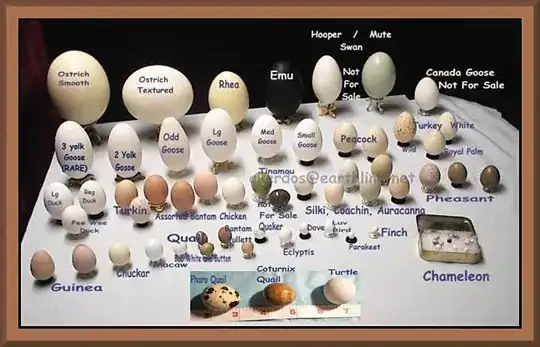The recipe for poaching regular chicken eggs states to leave the egg in a pot of simmering water for ~4 minutes (besides of messing with the liquid pH levels).
I was wondering how the temperature, pH and the time would change for eggs of different sizes, e.g. quail and ostrich ?
